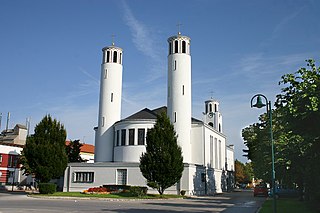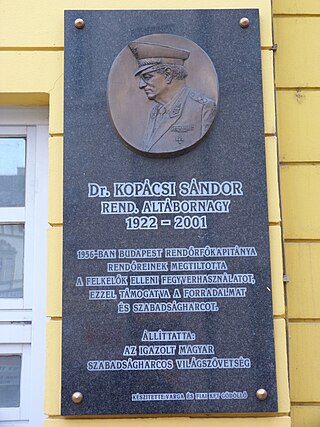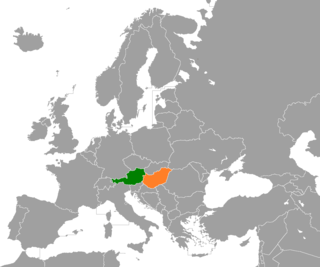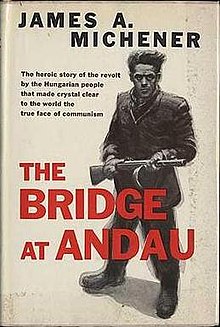
Imre Nagy was a Hungarian communist politician who served as Chairman of the Council of Ministers of the Hungarian People's Republic from 1953 to 1955. In 1956 Nagy became leader of the Hungarian Revolution of 1956 against the Soviet-backed government, for which he was sentenced to death and executed two years later. He was not related to previous agrarianist Prime Minister Ferenc Nagy.

The State Protection Authority was the secret police of the People's Republic of Hungary from 1945 to 1956. The ÁVH was conceived as an external appendage of the Soviet Union's KGB in Hungary responsible for supporting the ruling Hungarian Working People's Party and persecuting political criminals. The ÁVH gained a reputation for brutality during a series of purges but was gradually reined in under the government of Imre Nagy, a moderate reformer, after he was appointed Prime Minister of Hungary in 1953. The ÁVH was dissolved by Nagy's revolutionary government during the Hungarian Revolution of 1956 and succeeded by the Ministry of Internal Affairs III.

The Hungarian Revolution of 1956, also known as the Hungarian Uprising, was an attempted countrywide revolution against the government of the Hungarian People's Republic (1949–1989) and the policies caused by the government's subordination to the Soviet Union (USSR). The uprising lasted 12 days before being crushed by Soviet tanks and troops on 4 November 1956. Thousands were killed and wounded and nearly a quarter of a million Hungarians fled the country.

The Hungarian Working People's Party was the ruling communist party of Hungary from 1948 to 1956.

János József Kádár, born János József Czermanik, was a Hungarian Communist leader and the General Secretary of the Hungarian Socialist Workers' Party, a position he held for 32 years. Declining health led to his retirement in 1988, and he died in 1989 after being hospitalized for pneumonia.

The Brücke von Andau is a small bridge over the Einserkanal / Hanság-főcsatorna, a small artificial river which forms part of the border between Austria and Hungary. It is located near to the village of Andau.

Andau, is a village in Burgenland, Austria, near the border of Hungary. It is situated in the flat, lake-studded Seewinkel region which is part of the Little Hungarian Plain.

András Hegedüs was a Hungarian Communist politician who served as Chairman of the Council of Ministers from 1955 to 1956. He fled to the Soviet Union on 28 October, the fifth day of the Hungarian Revolution of 1956, but returned in 1958 and taught sociology.

József Dudás, was a Hungarian politician and resistance fighter.

The Hungarian People's Republic was a one-party socialist state from 20 August 1949 to 23 October 1989. It was governed by the Hungarian Socialist Workers' Party, which was under the influence of the Soviet Union. Pursuant to the 1944 Moscow Conference, Winston Churchill and Joseph Stalin had agreed that after the war Hungary was to be included in the Soviet sphere of influence. The HPR remained in existence until 1989, when opposition forces brought the end of communism in Hungary.

Dr. Béla Király was a Hungarian army officer before, during, and after World War II. After the war, he was sentenced to death under the Soviet-allied regime, but was later released. After his release, he commanded the National Guard in the 1956 Hungarian Revolution. He then fled to the United States, where he became an academic historian. He returned to Hungary after the collapse of the Soviet Bloc and was elected a member of Hungarian Parliament.
Although the Hungarian Revolution of 1956 failed in its efforts to oust the ruling Communist government of Hungary, the uprising provided inspiration for many artists, writers, poets, composers and filmmakers.

Sándor Kopácsi was a participant in, and chronicler of, the Hungarian Revolution of 1956.

October 1956 was the tenth month of that leap year. The month which began on a Monday and ended after 31 days on a Wednesday

Hungarian–Soviet relations were characterized by political, economic, and cultural interventions by the Soviet Union in internal Hungarian politics for 45 years, the length of the Cold War. Hungary became a member of the Warsaw Pact in 1955; since the end of World War II, Soviet troops were stationed in the country, intervening at the time of the Hungarian Revolution of 1956. Starting in March 1990, the Soviet Army began leaving Hungary, with the last troops being withdrawn on June 19, 1991.
The Hungarian Writers Union was founded in 1945 at the end of World War II. Initially the union was intended to be an organizational body through which the interests of writers in Hungary could be represented. It grew to become a major voice of dissension against the Communist regime in Hungary during the 1950s and had a significant role in sparking the Hungarian Revolution of 1956.
Jenő Szervánszky (1906–2005) was a Hungarian Post-Impressionist artist.

The city of Budapest was officially created on 17 November 1873 from a merger of the three neighboring cities of Pest, Buda and Óbuda. Smaller towns on the outskirts of the original city were amalgamated into Greater Budapest in 1950. The origins of Budapest can be traced to Celts who occupied the plains of Hungary in the 4th century BC. The area was later conquered by the Roman Empire, which established the fortress and town of Aquincum on the site of today's Budapest around AD 100. The Romans were expelled in the 5th century by the Huns, who were challenged by various tribes during the next several centuries. The Hungarian conquest of the Carpathian Basin started at the end of the 9th century, and the Kingdom of Hungary was established at the end of the 11th century.

Neighbourly relations exist between Austria and Hungary, two member states of the European Union. Both countries have a long common history since the ruling dynasty of Austria, the Habsburgs, inherited the Hungarian throne in the 16th century. Both were part of the now-defunct Austro-Hungarian Empire from 1867 to 1918. The two countries established diplomatic relations in 1921, after their separation.

Communist rule in the People's Republic of Hungary came to an end in 1989 by a peaceful transition to a democratic system. After the Hungarian Revolution of 1956 was suppressed by Soviet forces, Hungary remained a communist country. As the Soviet Union weakened at the end of the 1980s, the Eastern Bloc disintegrated.

















